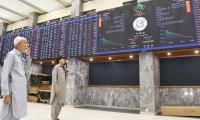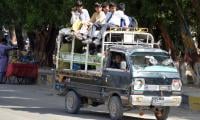World GDP is around $80 trillion. Global debt, both public and private, is around $255 trillion. So the world is leveraged more than three-times its annual income. Such high leverage can potentially cause huge disruptions the world over if a negative shock hits the world economy. The shock has visited us from an unimaginable way, like a ‘black swan’.
Until recently, market pundits were predicting an evolving market crash along the lines of the last financial crisis of 2008-09. Dismissing all predictions of doom and gloom, the markets were never as buoyant since 2009 as during 2019: shares in the US rose 30 percent, Japan 18 percent and UK 12 percent despite the business uncertainty that surrounded Brexit.
Just as New York was celebrating the arrival of the new year, with its characteristic passion and fervour, a silent killer was moving in the dark of night: China reported to the WHO a string of pneumonia-like cases in Wuhan. A local problem in an hitherto obscure town would soon become a pandemic shaking the world to its core.
The remarkable growth in markets was significantly due to over leveraging, as the stock of debt rose by $10 trillion. The debt level is now 40 percentage points higher than at the onset of the 2008 financial crisis. There is a refinancing alert also: over $20 trillion of global bonds and loans would become due through end-2020; $4.3 trillion of that in Emerging Markets. EMs will need to refinance $730 billion in foreign debt through end-2020. These numbers are challenging in their own right but could prove back-breaking in the face of massive contraction in the global economy.
This humongous debt will now see a record increase in the wake of widespread fiscal actions to ward off the immediate fall-out from the lockdown. The IMF’s Fiscal Monitor estimates that as much as $8 trillion worth of packages have already been announced. That would be happening in the backdrop of the largest contraction in the global economy since the Great Depression. The logic of leverage works as forcefully on the downside as when it propels businesses on the up. Only a fraction of leverage is supported by capital and deposits. Debtors would initially face a liquidity problem which soon would turn into insolvency. On this front alone, the world could see a bigger crisis than in 2008-09.
In a statement on April 9, 2020, the IMF managing director, while terming the situation as a crisis like no other, said that “Covid-19 has disrupted our social and economic order at lightning speed and on a scale that we have not seen in living memory”. She pointed out that growth would be sharply negative during 2020. Against some 160 countries where per capita income was projected to grow, it is now estimated that 170 countries would experience negative growth. Some economists estimate that Western countries could lose as much as six percent in growth.
While attention is fixed on fighting the pandemic, social scientists are shying away from predicting the shape of the new world. It is not even clear when recovery would start, or even worse, how it would be defined. Some are worried that the pre-pandemic world will not return and the institutional foundations of the world order will soon be tested. Not only is capitalistic economics in danger, but multilateralism may not also survive the distrust sowed among the superpowers by the disease, regarding its source and timing. Globalization could fade as nationalism, racism and a schism in East-West relations gain prominence.
The new world will be vastly transformed, with concerns about health overriding all else. Just as the ‘war on terror’ spawned extraordinary investments on security, health checks will be ubiquitous requiring vast sums in investments and enforcement. It is difficult to imagine if normal travel would resume in any foreseeable future.
Given this backdrop, it seems quite unlikely that life would return to normal in the South Asian region any time soon. Mercifully, the region has so far escaped the kind of casualties witnessed in Europe and the US, or even Iran. But experts are unanimous that this is no time to lower our guard. Italy, which until recently was the most affected of all and which looks to have passed its peak, is considering to relax the lockdown only slightly.
Pakistan’s leadership remains divided on the nature and duration of the lockdown, which is unfortunate. Barring the US, where President Trump has politicized a straight-forward technical issue of lockdown, nowhere have governments faced any opposition to this fundamental method of containing the pandemic. The IMF has also remarked that it is fallacious to think there is a trade-off between containing the disease and saving livelihood: “defeating the virus and defending people’s health are necessary for economic recovery”.
The government’s focus has to be on supporting the people to live through this lockdown. Daily-wage earners and other indigent groups should be provided cash grants under the Ehsaas programme for as long as it would take to weather this storm. In my previous article, I had made several suggestions to further strengthen this program. Two key suggestions were to make the programme national (to ensure national coverage and avoid duplication) with cost sharing with provinces and raise the size of assistance from Rs3,000 to Rs15,000 per month for four months in two tranches. This would be close to the minimum wage of Rs17,000.
Equally importantly, the government should design an assistance package that would enable businesses to restart their enterprises, whenever this becomes feasible, or pay their employees during the lockdown period. This assistance should comprise concessional loans, guarantees, tax concessions, refunds of taxes and other rebates. The cost of such assistance could be met through higher deficit (with a Fund adjuster for fighting virus) and international support from bilateral and multilateral lenders in rescheduling of official debts during a pandemic.
The writer is a former finance secretary.
Email: waqarmkn@gmail.com
A health worker administers polio vaccine drops to a child during a door-to-door polio vaccination campaign in Lahore,...
Armed militants of the banned Tehreek-e-Taliban Pakistan pose for a photograph in Orakzai Agency. —...
An aeroplane of the national flag carrier of Pakistan is seen in this file photo. — AFPWhile Pakistan considers...
Representational image of a graph depicting various variables. — APP/FileInitiated by the centre and fiercely...
In this picture taken on April 16, 2023, people throng a market area during shopping in Lahore. — AFPOne of the...
Honour crimes also target men. In Sikandar Ali Lashari vs The State, SHC upheld conviction passed by ATC for honour...







